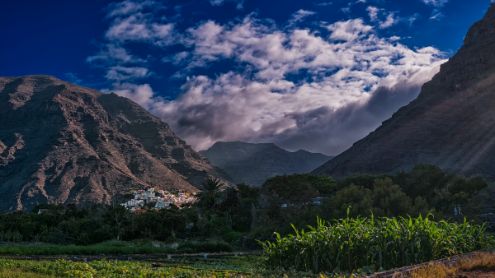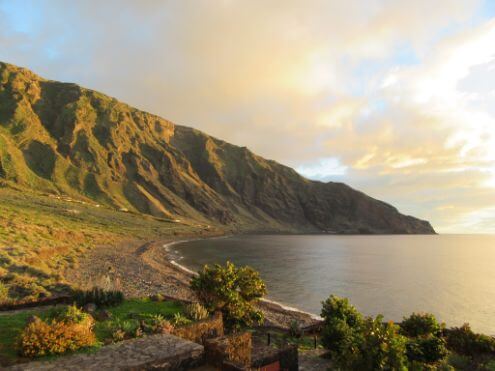If you’re getting bored of the winter rain and winds, book a last-minute getaway to somewhere with guaranteed warmth and sunshine to refuel on vitamin D. At this time of year, the Canary Islands are a great option. This archipelago is the most southerly region of Spain, set off the African coastline. Whether you’re looking for a seaside break or a mountainous escape, a rural retreat or buzzing city nightlife, there’s something for everyone to discover on these eight volcanic islands.
You may well already be familiar with the charms and attractions of the larger islands, Tenerife, Fuerteventura, Gran Canaria, Lanzarote, and La Palma, so we’ve focused on the unspoken gems of the three smaller islands below:
La Gomera

Image Credit: Jörg Bergmann
La Gomera is the least populated of the Canary Islands; so much so that the island has a network of 600km of mysterious trails to hike and lose yourself.
It has many unique factors, including the island's pre-Hispanic whistling language, Silbo, which has gained UNESCO Intangible Cultural Heritage status. You can still hear people communicating in this way today.
One of the island’s claims to fame is as Christopher Columbus’ last point of call prior to his three voyages to the Americas; the house where he stayed in San Sebastián is now a tourist attraction.
Visitors to the island also enjoy exploring the unique laurel forests at Garajonay National Park, taking a trip to Agulo, the little village known as the ‘jewel of La Gomera’ with views of the Teide volcano on Tenerife next door, marvelling at the natural vertical lava pipes of Los Órganos, best seen from the sea, and relaxing in the Valle Gran Rey, with its black sand beaches, vivid blue water, palm trees, and little white houses.
El Hierro

Image Credit: Dan
Kick back and relax on this peaceful island. The furthest west of the Canaries, El Hierro retains a traditional look and is home to small family-run hotels. Indeed, construction on the island has been limited due to its status as a UNESCO World Biosphere Reserve; the island supports endemic species such as the critically endangered El Hierro giant lizard.
There are plenty of natural wonders to enjoy, such as the rich forests, sea cliffs, and interesting lava features. Below the surface of the water, divers can enjoy 46 different dive sites which celebrate the marine ecosystem.
Highly recommended spots to visit on the island include the La Peña viewpoint, a fantastic work of art by César Manrique; the Garoé Tree, a sacred spot for original island inhabitants; the Charco Azul, a warm and quiet seawater pool; and the Frontera Rural Park, an enchanted forest of twisted junipers.
For those concerned about their ecological footprints, the island is the first to become completely self sufficient using only renewable energy, thanks to its hydroelectric plant. Free Wifi is also available all over the island.
La Graciosa

Image Credit: Joan Campderrós-i-Canas
The island that is said to have inspired Treasure Island is reachable via a 35-minute ferry crossing from Lanzarote. This smallest Canary Island officially became the eighth in the archipelago in 2018. There are just two settlements on the island and a population of 700, but tourism is the main industry on the island thanks to its temperate climate and sandy coastlines. The island tends to be popular for day-trippers, but those wishing to stay a little longer can enjoy camping on the Playa de El Salado.
The beaches are incredibly empty; Playa de las Conchas, which is furthest from the harbour is most quiet, or visit Playa de las Cocina for its near-white sand and bright blue waters. There are no paved roads on the island, but this makes hiking and cycling all the more appealing; the tourist board recommends three routes around the island which take in the mountains, beautiful beaches, and hidden coves.
Title Image Credit: Rolf Dietrich Brecher (Image Cropped)